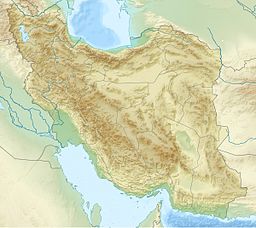| Awan dynasty Dynasty of Peli | |
|---|---|
| Dynasty | |
A map of the Near East detailing the geopolitical situation in the region during the Awan dynasty c. 2600 BC occupied by various contemporaneous archaeological cultures and/or civilizations such as those of the:
A clickable map of the present-day Islamic Republic of Iran detailing the locations of various ancient, archaeological sites, settlements, hamlets, villages, towns, and/or cities (and the approximated locations of six lost cities: Akkad, Akshak, Urua, Hidali, Hurti, and Kimash; also, the two lost capital cities of the Elamite Empire: Awan and Shimashki) that may have been visited, interacted and traded with, invaded, conquered, destroyed, occupied, colonized by and/or otherwise within the Elamites’ sphere of influence at some point temp. the dynasty of Awan. | |
| Parent family | Early Elamite kings |
| Country | Elam |
| Current region | Western Iran |
| Earlier spellings | lugal-e-ne a-wa-anki |
| Etymology | Kings of Awan |
| Place of origin | Asia |
| Founded | c. 2400 BC (c. 2600 BC) |
| Founder |
|
| Final ruler | Puzur-Inshushinak (r. c. 2100 BC) |
| Final head | Luh-ishan (d. c. 2325 BC) |
| Historic seat | Awan |
| Titles | |
| Connected families | Sukkalmah dynasty |
| Traditions | Elamite religion |
| Estate(s) | Godin Tepe |
| Dissolution | c. 2015 BC |
| Deposition | c. 2450 BC |
| Cadet branches | Shimashki dynasty |
The Elamites remained a major source of tension for the Sumerians, Akkadians, Amorites, Assyrians, Babylonians, and Kassites millennia after the supposed victory of the Awan dynasty over the first dynasty of Ur c. 2600 – c. 2340 BC as described on the Sumerian King List (SKL). | |
 |
| History of Greater Iran |
|---|
The Awan dynasty[a] was the first dynasty of Elam of which very little of anything is known today—appearing at the dawn of recorded history. The dynasty corresponds to the early part of the first Paleo-Elamite period (dated to c. 2400 – c. 2015 BC); additionally, succeeded by the Shimashki (c. 2200 – c. 1980 BC) and Sukkalmah dynasties (c. 1980 – c. 1450 BC).[1][2] The Elamites were likely major rivals of neighboring Sumer from remotest antiquity—they were said to have been defeated by Enmebaragesi of Kish c. 2750 BC—who is the earliest archaeologically attested king named on the Sumerian King List (SKL); moreover, by a later monarch, Eannatum of Lagash c. 2450 BC.[3] Awan was a city-state or possibly a region of Elam whose precise location is not certain; but, it has been variously conjectured conjectured to have been within the: Ilam and/or Fars provinces of what is today known as the Islamic Republic of Iran, to the north of Susa (in south Luristan), close to Dezful (in Khuzestan), or Godin Tepe (in the Kermanshah Province).[4][5][6]
Cite error: There are <ref group=lower-alpha> tags or {{efn}} templates on this page, but the references will not show without a {{reflist|group=lower-alpha}} template or {{notelist}} template (see the help page).
- ^ Leick 2001, p. 99.
- ^ Ir 2015b.
- ^ Gershevitch 1985, p. 25–26.
- ^ Liverani 2013, p. 142.
- ^ Hansen & Ehrenberg 2002, p. 233.

